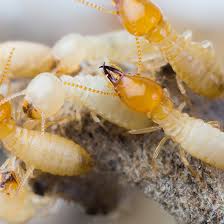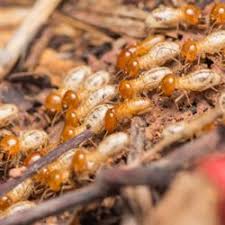The Termite Control Review Diaries
This page describes the three types of subterranean termite, drywood and dampwood.
Termites are categorized into three ecological categories depending on their nesting and feeding habits: subterranean, drywood and dampwood.
Subterranean termites are the most common kind of termite that are one of the most destructive pests and infests timber. Outdoors they infest wood in contact with the dirt, such as trees, stumps and branches. They prefer wood that has some amount of rust already, which makes it easier for them to digest it, even though they can digest wood. .
The Best Guide To Termite Control Review
Subterranean termites need to be near a supply of moisture to survive, which makes their nests in or close to the ground where moisture can be easily acquired by them in the soil. They tunnel through soil to get timber or moist soil and they tunnel down deeper to reach moisture. .
The termites use soil for a material to build nests and shelter tubes, which are composed of wood, dirt, faeces and saliva. Some species build carton nests above ground and construct shelter tubes (also referred to as mud tubes) to link the nest to the ground.
Foraging is determined by the weather, with activity in summer and action in dry conditions or chilly . In tropical areas they can forage with peaks during wetter conditions.
Termite Control Review Can Be Fun For Anyone
Drywood termites live inside parts of timber, wholly in colonies less than 1000 people. There might be tiny colonies like a piece of furniture within a single piece of timber or object. They could feed across rings as is subterranean termites so that the galleries don't follow the grain of wood, but they tend to avoid heartwood.

Colonies may grow for many years undetected until the wood breaks or even the swarm. The alates, that are may not be made for years in a colony that was new until the population reaches a vital point. Then they leave the nest find a site that is new in order to mate and start a new colony, generally not and to set up. .
Dampwood termites normally infest wood that remains moist due to contact with the soil or, as an example, through a water flow in a construction. They are likely to infest timber that is outside stump or logs in contact.

The Facts About Termite Control Review Revealed
Dampwood termites live completely they make open galleries and feed on. As with drywood termites, they may infest timber for years before they're discovered, which is likely when the alates swarm from a colony. Swarming may occur discover here over a few months, with species swarming at distinct times.
They're an indication of a moisture problem, if they are found at a building. By taking away the supply of moisture they are usually minor pests and may be controlled in buildings. In trees that they have a tendency to feed on dead and rotting wood.
Termite species can be difficult to identify, even for the specialists. Identification is dependent on the soldiers, which is the caste which has the most easily distinguishable features.
Of the pest species listed above, it is the Coptotermes species which are public enemy number 1 in Australia.
Termite Control Review - The Facts
The mind of the soldier is and yellowish with darker mandibles that are thin. Body is up to 7 mm long. It's easily confused with two other native Coptotermes species, including C. frenchi and C. lacteus (Victoria Museum)
The soldiers produce a white sticky liquid from a opening (fontanelle) on front of head when protecting the nest from assault.
Coptotermes species generally do not build mounds, but in Queensland and other tropical areas of Australia. They mostly stumps, nests in trees, sticks, buried wood around houses, spaces under buildings and in walls. Favoured trees for nesting are English oaks, various eucalypts and peppercorns. The colony is found at the root crown or the part of their trunk.
5 Simple Techniques For Termite Control Review
Although Mastotermes darwiniensis is the destructive locally across its limited range in tropical northern Australia coptotermes acinaciformis is the most destructive termite species in Australia overall. C. acinaciformis attacks all lumber structures and obligations forest and ornamental trees as well as fruit trees.